Now closed to the public as part of the enlarged White House security zone, the Square has witnessed many historic moments over the last two centuries.
-
June 2020
Volume65Issue3
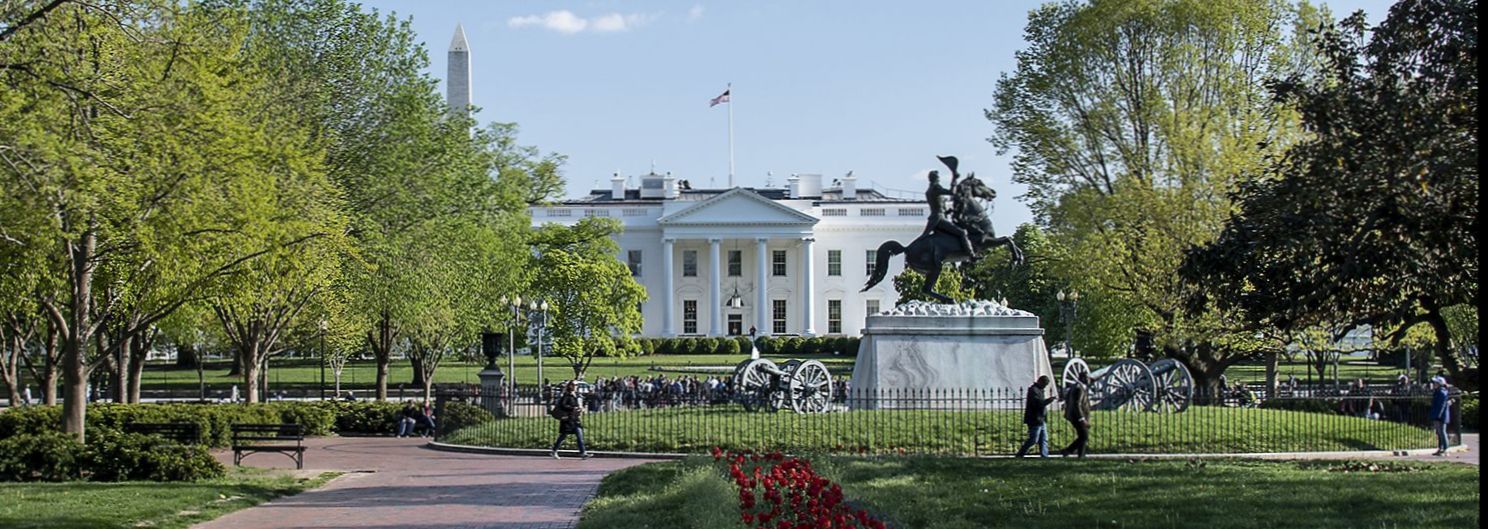
Editor’s Note: Gil Klein is a former reporter for the Tampa Tribune and Media General New Service who runs the University of Oklahoma Washington Program. He is the author of Lafayette Square: Assassination, Protest & Murder at the White House.
Washington, DC’s Lafayette Square is in the news again as crowds of protesters pushed almost to the White House, and Park Police cleared the Square for the President’s controversial visit to St. John’s Church.
Since then, Lafayette Square has been completely closed off to the public by a high security fence, along with the famous Ellipse south of the White House.
In his original plan for the Nation’s Capital, Pierre L’Enfant called for an area to be known as “President’s Park,” but its beginnings were not auspicious. As the White House and nearby federal buildings were under construction, the park served mostly as a staging area for workers.
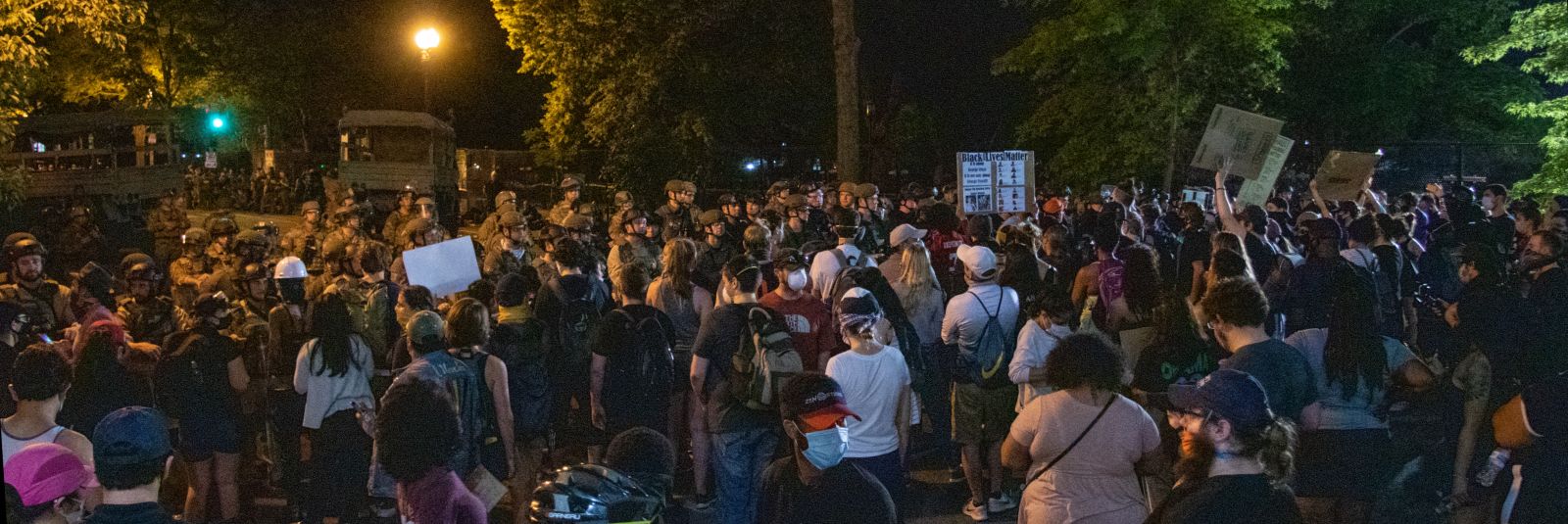
There was a question about whether the park would be part of the White House grounds itself, or open to the public? President Jefferson, who always wanted to shrink the size of the federal footprint, decided the park would be outside the White House.
It’s certainly not new for the Square to be a focus for history – and mayhem. Much has taken place in the seven-acre “President’s Park” which, with the buildings that surround it, make up Lafayette Square.
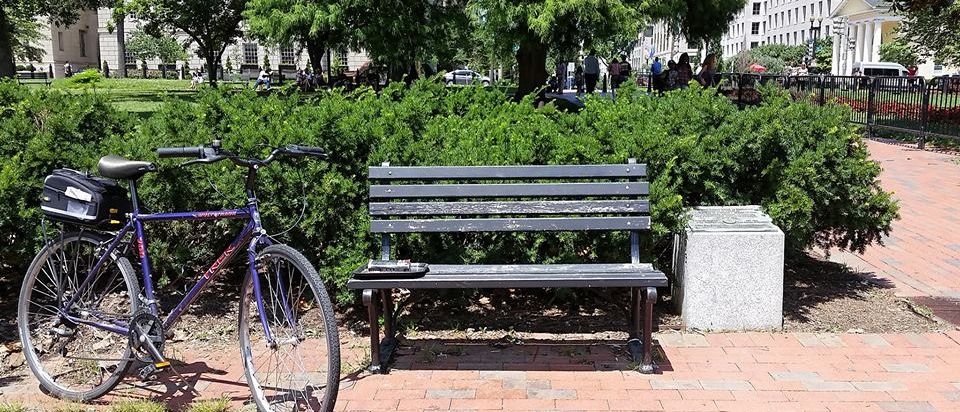
In the center of the Square is a famous bench where I sat many times over the years while working on a book about historic incidents that happened there over the past 200 years. A historical marker identifies it as the “bench of inspiration,” as it was called by Bernard Baruch, the financier who advised presidents from Wilson to Truman. Government officials and politicians would often join Baruch on the bench to seek his wise counsel.
From that vantage point you can take in dozens of places consecrated in American history. Over your right shoulder you can see Decatur House, built by naval hero Stephen Decatur in 1818, where he was brought home to die after a duel. To the left you see where Rep. Dan Sickles, in a jealous rage, gunned down the son of Francis Scott Key in broad daylight in front of witnesses – a crime he ultimately got away with it.
Or behind it where Lincoln’s Secretary of State William Seward lived when he was nearly killed by an assassin on the night the President was shot at Ford’s Theater.
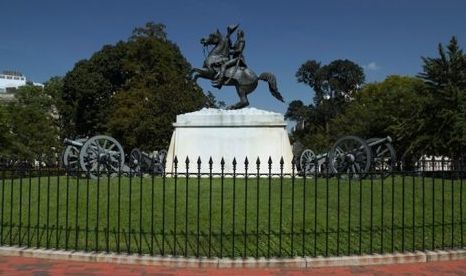
Two Puerto Rican nationalists strode by here on their way to try to assassinate President Truman who was living at the Blair House adjacent to the park at the time.
Behind you is the 204-year-old St. John’s Episcopal Church, the first structure built on the Square after the White House. Its bells chime the hour. Across the street from it once stood the home of Rose Greenhow, a Confederate spy.
And right in front of you is the statue of Andrew Jackson on a rearing horse. Chiseled into the base is the toast that Jackson made as he stared down Senator John C. Calhoun of South Carolina over his threats to nullify Federal laws: “The Union: It must be preserved.”
Still, the park languished for years. One small corner was used by an enslaved woman named Alethia Browning Tanner as her vegetable garden, raising produce she sold to raise money to buy freedom for herself and her family.
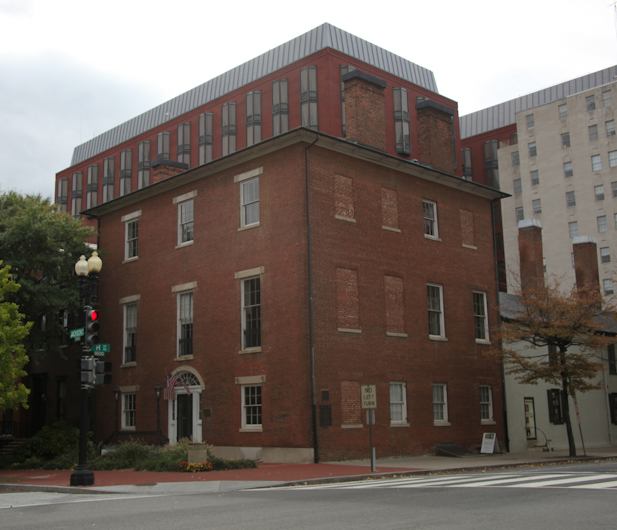
In the War of 1812, the British burned the White House, momentarily raising the question of whether the nation’s capital should even remain in Washington. Once that was settled, development around the park began. Slaves helped rebuild the White House and construct many of the buildings surrounding Lafayette Square.
In 1818 Stephen Decatur used the money he was awarded for defeating the Barbary States on the coast of North Africa to build the first mansion on the northwest corner. Decatur House is now one of the oldest surviving homes in Washington, and one of only three remaining houses designed by Benjamin Henry Latrobe, architect of the U.S. Capitol. It remains open today as a house museum and headquarters of the White House Historical Society.
Decatur’s widow rented the house to three Secretaries of State: Henry Clay, Martin Van Buren and Edward Livingston, who collectively made Decatur House the unofficial residence of the Secretary of State from 1827 to 1833.
But in 1836, Susan Decatur lost the home to creditors. It was purchased by Virginia tavern keeper John Gadsby. He was also a slave broker and kept the unfortunate souls crammed into a back portion of the building that still stands. Liz Williams, the director of the Gadsby Tavern in Alexandria, believes that as many as 25 slaves lived in the Decatur House at any one time.
In the ensuing decades of the 19th century, stately townhouses and mansions surrounded the park, making it the city’s first upscale neighborhood. At least five secretaries of state lived there, as well as Supreme Court justices, senators, generals, admirals, explorers and top presidential advisors.
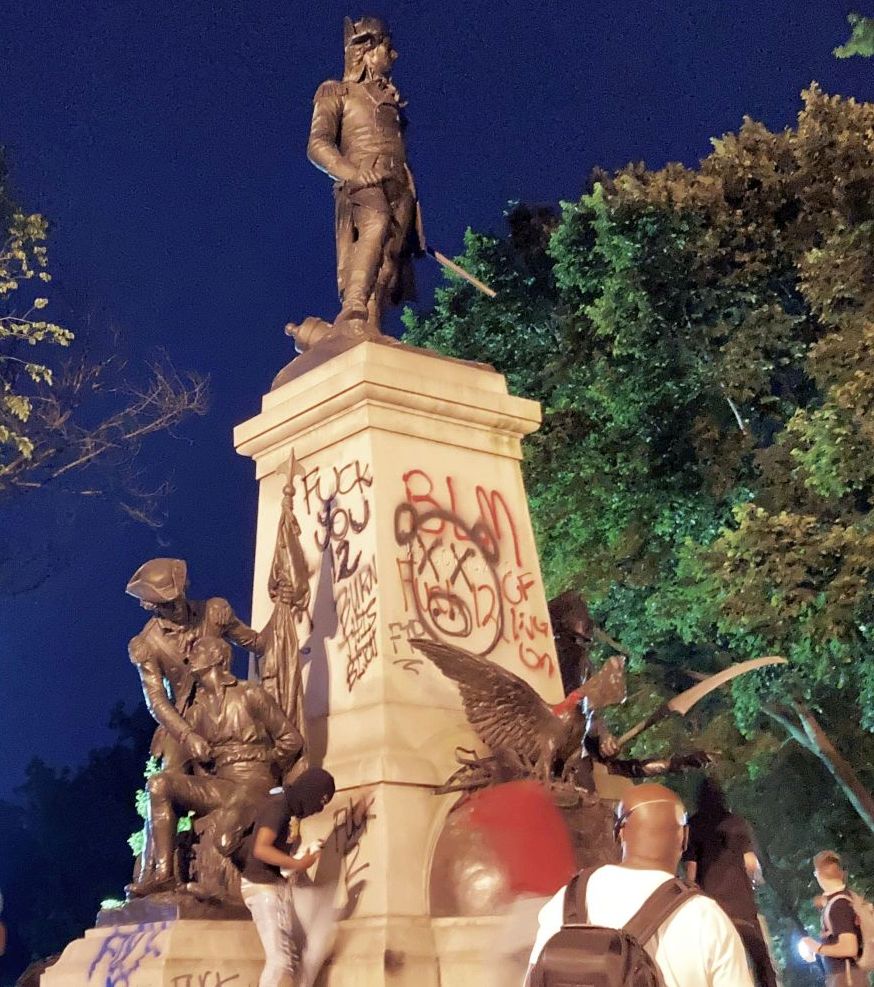
So, if Andrew Jackson’s statue is in the middle of the park, why is it named after the Marquis de Lafayette? Lafayette's statue was not erected in the southeast corner of the park until 1891.
The French nobleman had come to the United States at the age of 19 and was immediately embraced by George Washington, who made him a general. Along with serving throughout the Revolution, Lafayette helped cement ties between France and the fledgling nation essential for victory. Lafayette was an abolitionist who helped convince Washington to free his slaves in his will. And, at the beginning of the French Revolution, with Jefferson’s help, he wrote the “Declaration of the Rights of Man and of the Citizen.”
In 1824, Lafayette returned to the United States to take a grand tour of every state then in the Union. He began in Washington meeting with fellow Revolutionary War officer and now President James Monroe, and ended in 1825, meeting with President John Quincy Adams, the son of the revolutionary firebrand.
See also “Vandalism in Lafayette Park” in this issue
Everywhere Lafayette went, the local populace named things after him, whether it was Lafayette, Louisiana; Lafayette, Indiana; Fayetteville, N.C.; Lafayette County, Florida; Lafayette College in Pennsylvania; even LaGrange, Georgia, named for Lafayette’s estate in France. There’s a town of LaGrange in Fayette County, Tennessee.
It should only make sense that something prominent in Washington be named for him. Hence, Lafayette Park and Square became common names for the area right after the general’s visit and officially in 1836, long before the Jackson statue was constructed in 1853.
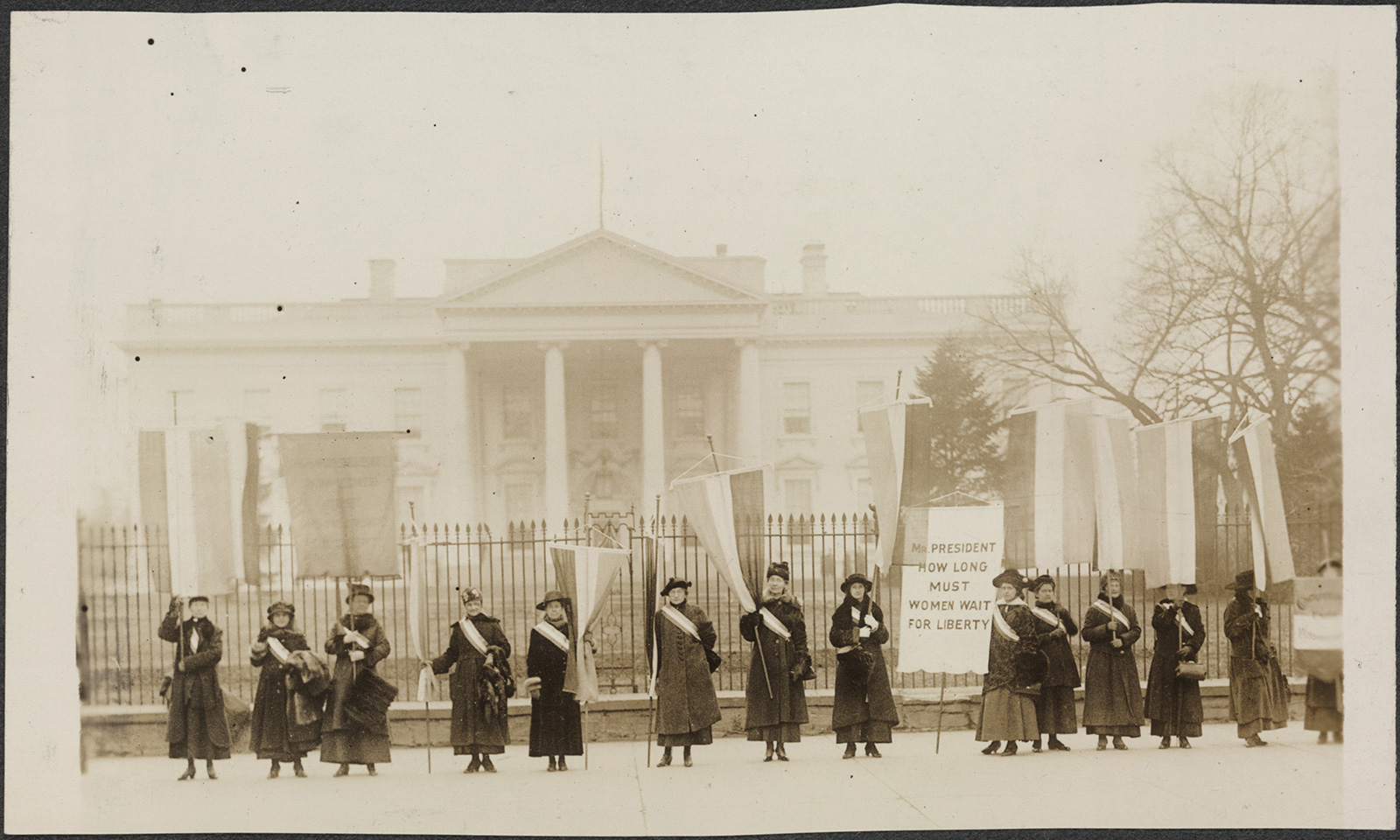
The park did not become a focal point for protest movements until Alice Paul decided to make one of the townhouses on its periphery the headquarters for the National Woman’s Party in its fight for women’s suffrage.
Paul believed that the only way to get equal voting rights for women was a constitutional amendment. Waiting for the states to approve it one-by-one would not work. She decided that the best way to do that was to convince President Woodrow Wilson to support the amendment. Wilson was a fence sitter. She would take the demands directly to the White House.
In 1915, she rented what was then known as the Cameron House on the east side of the park. By January 1917, she mobilized her forces to begin regularly picketing the White House. This coincided with America’s entry into World War I that April.
Wearing sashes and carrying banners, the picketers marched out of the townhouse to the front of the White House. They highlighted what they saw as the hypocrisy of Wilson claiming America was fighting the war for democracy while half of America’s citizens could not vote.
Said one:
20,000,000 American women are not self-governed.
Take the beam out of your own eye.
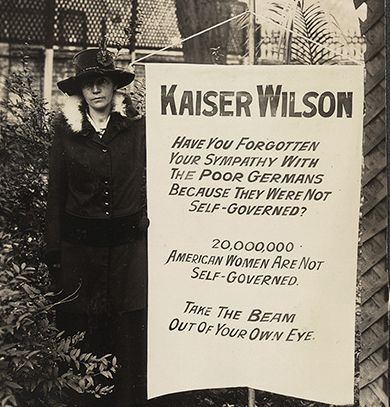
Calling the president “Kaiser Wilson” during the war did not sit well with many people. They would tear up the banners and rip off the sashes, hurling insults. The women would return to the townhouse, get new ones and take up their positions at the White House. Arrests by city police did nothing to deter them from returning when they were released.
On August 14, a mob of several thousand people, including many service members who were provoked by the suffragists’ “Kaiser Wilson” taunts, converged on the Lafayette Square headquarters.
As Mary Walton recounted in her book, A Woman’s Crusade: Alice Paul and the Battle for the Ballot, when a suffragist walked out with a Kaiser banner, a sailor grabbed it.
She went back for another and got no further than the corner before she was attacked. Three sailors attacked the suffragist and dragged her to the curb. When she freed herself, she ran back to the headquarters and up to the second-floor balcony, where she draped more banners over the rail.
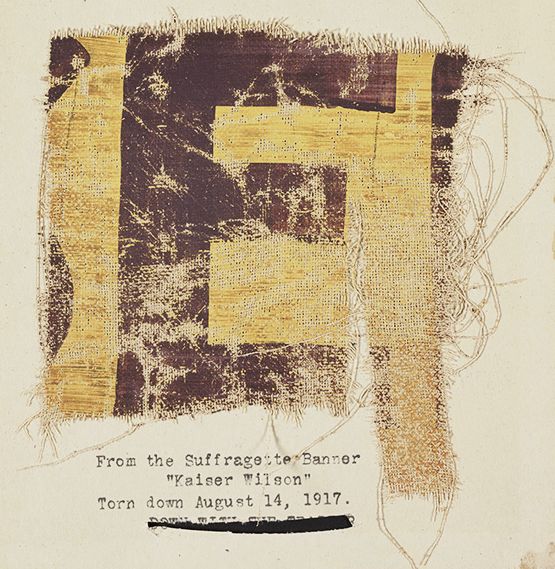
Three sailors got a ladder from the theater next door, climbed up on the balcony and tore down the banners. A bullet broke a second-floor window and lodged in the ceiling. Suffragists hung more banners from the balcony as protestors threw eggs and tomatoes. Police finally dispersed the mob, but the suffragists streamed out of the headquarters with more banners that were destroyed by members of the mob who had not left.
The picketing went on for months. As police became more exasperated, the women were sentenced to longer jail terms in squalid conditions. Some, including Alice Paul, staged hunger strikes while imprisoned. Even after the headquarters was forced out of its townhouse on the east side of the park, it moved to one on the west side. At times, the women kindled fires in urns outside the White House fueled by Wilson’s speeches.
All of this achieved Alice Paul’s goal – a steady barrage of news stories that highlighted the plight of women seeking equal voting rights. With the 1918 elections looming, Wilson finally agreed to support the constitutional amendment, although it did not pass in Congress until 1919 and ratified by the states in 1920.
The suffrage movement lit a fire both figuratively and literally that still burns today. Mass demonstrations in Washington to petition the government for redress of grievances, as the First Amendment says, have become a regular part of the city. While most of the largest demonstrations are staged on the National Mall and the Ellipse south of the White House, Lafayette Park is still a favored venue for smaller groups.
The park is a “personal venue” for demonstrators, according to the White House Historical Association. “Lafayette Park, as the front yard of the White House, played an integral role of bringing the government and the people within reach of each other. The president could not ignore what the people were saying.”
Some sort of demonstration has been going on daily for decades. Mostly its smaller groups with bullhorns and banners trying to bring attention to their causes, both domestic and foreign.
As writer Roger McDaniel pointed out, “During the Gulf War, President George H.W. Bush was annoyed with an anti-war demonstration in Lafayette Park. An ‘incessant’ drumbeat used by protesters was so loud, he ordered the drums silenced. ‘Those damn drums are keeping me up all night,’ Mr. Bush told a group of visiting congressmen. But a federal court order held the park was a public place. The whole point of free speech was to get the attention of the President. The beat went on.”
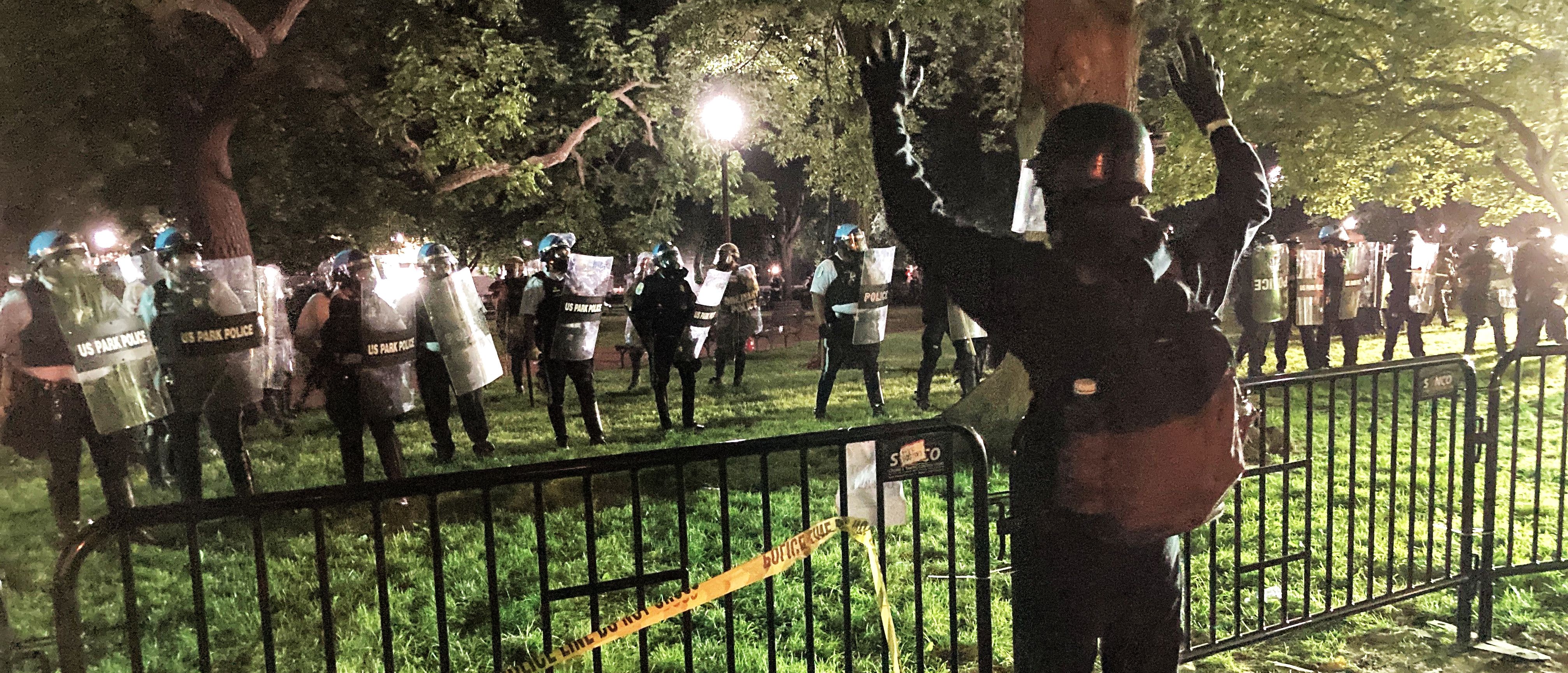
A new chapter in the history of Lafayette Square was written on May 31 and June 1, 2020. Protests boiling up from the deep wounds of social injustice triggered by the death of an African American in police custody in Minneapolis led to a demonstration in the park during the night causing vandalism and arson, including a small fire at St. John’s Church.
The next day, Trump ordered a military-style routing of peaceful demonstrators in the park, upending the First Amendment protections of freedom of assembly so that he could walk across the park for a photo op holding a Bible in front of St. John’s Church.
Many Americans found the violent dispersal of peaceful protesters to allow the President Trump to walk to St. John’s Church an affront to the Constitution’s First Amendment.
Now, a strong security fence closes off all of Lafayette Square to the public, as well as the entire Ellipse to the south of the White House.

